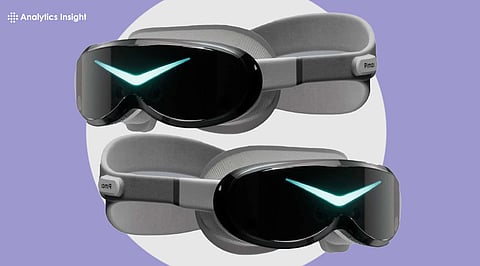

The Pimax Dream Air SE, launching in 2025, offers a sleek 150g design and stunning 2560x2560 display, paired with advanced eye-tracking technology, all for $899. This premium VR headset delivers sharp visuals at an affordable price, making high-end VR more accessible.
The Pimax Dream Air SE, the virtual reality headset to hit stores in 2025, is the marriage of high vision, lightness, and affordability. Weighing a mere 150 grams and priced at $899, and featuring Micro-OLED displays and eye-tracking, it offers VR at no trade-off for the price.
Below are some specs on its availability, features, performance, and impact that reveal what makes this headset so exciting to players and technophiles alike.
Pimax is scheduled to launch the Dream Air SE in Q3 2025, in July or August, following delays that delayed the initial Dream Air model. Pre-orders started in May 2025, as revealed on X, with shipping to follow production.
Priced at $899, it beats the standard Dream Air's $1,999 price, appealing to budget-friendly VR enthusiasts. Worldwide availability will extend to online stores and Pimax's website, expanding reach.
The Dream Air SE tips the scale at just 150 grams and is one of the lightest VR headsets. With a slender, lightweight design that eschews heavy predecessors, it's perfect for marathon gaming sessions.
There's a self-adjusting headstrap to keep it secure, and ventilation keeps heat away. The sleek, modern-looking minimalist design outside, unveiled in Pimax teasers, is available in black or white. The opposite of heavier rivals is a design emphasis on comfort at no expense to tech.
The Dream Air SE features two 2560x2560 Micro-OLED screens, providing clear, colorful images. This resolution, below the normal Dream Air's 3840x3552, nonetheless outclasses most affordable VR headsets. Micro-OLED technology provides rich blacks and high contrast, ideal for immersive games or virtual travel.
A refresh rate of 90Hz maintains smooth motion, although some X posts comment that the lenses are less sophisticated than on the premium model. Clarity of the visuals continues to be a highlight in the price category.
Eye-tracking and hand-tracking are included, adding to interactivity. Eye-tracking adapts focus from eye movements, improving performance and supporting social VR functions such as avatar eye movement. Hand-tracking provides controller-free movement, perfect for casual titles.
Inside-out tracking removes the need for external sensors, making setup easy. These features, explained in Pimax's announcements, render the headset highly versatile for games, simulations, or creative apps.
Being a PCVR headset, the Dream Air SE is hooked up to a computer through a cable, leaning on its compute power. SteamVR and Pimax software are supported for access to hundreds of VR games. Half-Life: Alyx or Beat Saber can be played smoothly on mid-to-high-end PCs, as per early tests shared online.
The lower-resolution design relative to the base model reduces hardware demands, making the headset more attractive to budget hardware configurations. Battery life isn’t a concern, as it draws power from the PC.
Priced at $899, Dream Air SE brings top-shelf features usually reserved for more expensive headsets. Alternatives such as the Meta Quest 3 or Valve Index are either pricier or miss out on eye-tracking within the same weights.
Pimax's focus on Micro-OLED and lightweight build sets a new standard for affordable VR. X chats praise its value, and gamers call it a "steal" for hardcore and casual core players. Its low cost might bring new people into VR, expanding the market.
The Dream Air SE is not perfect. Its less-advanced-than-the-baseline model lenses might result in slight edge visual distortion, reported on tech sites. PCVR dependence translates to no native mode, unlike the Quest 3.
Installation necessitates a good PC, which is an added expense for some. Pimax's previous delays, reported on X, make timely Q3 2025 achievement a worry. Software polish, essential to the accuracy of tracking, must excel at release to keep critics off its back early on.
The Dream Air SE may disrupt VR's affordable segment. With advanced features at an affordable price, Pimax defies behemoths like Meta and HTC. Success relies on consistent manufacturing and software support, domains where Pimax has come under scrutiny.
If well done, this headset might make its competitors go back to the drawing board. Its future iterations, such as wireless adapters or fresh lenses, could make it even more appealing, as Pimax's roadmap hinted. For now, it’s a bold step toward affordable, immersive VR.
